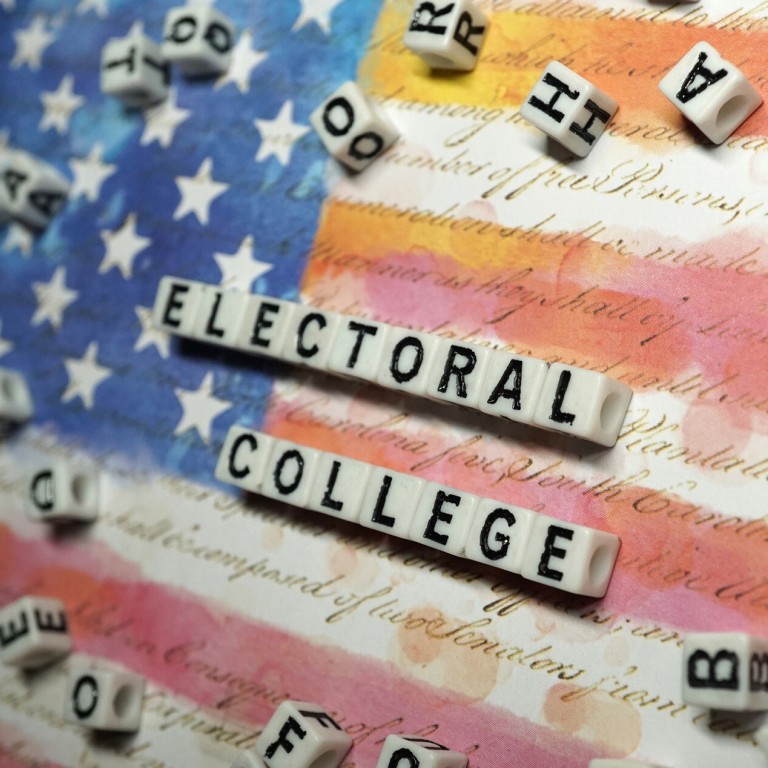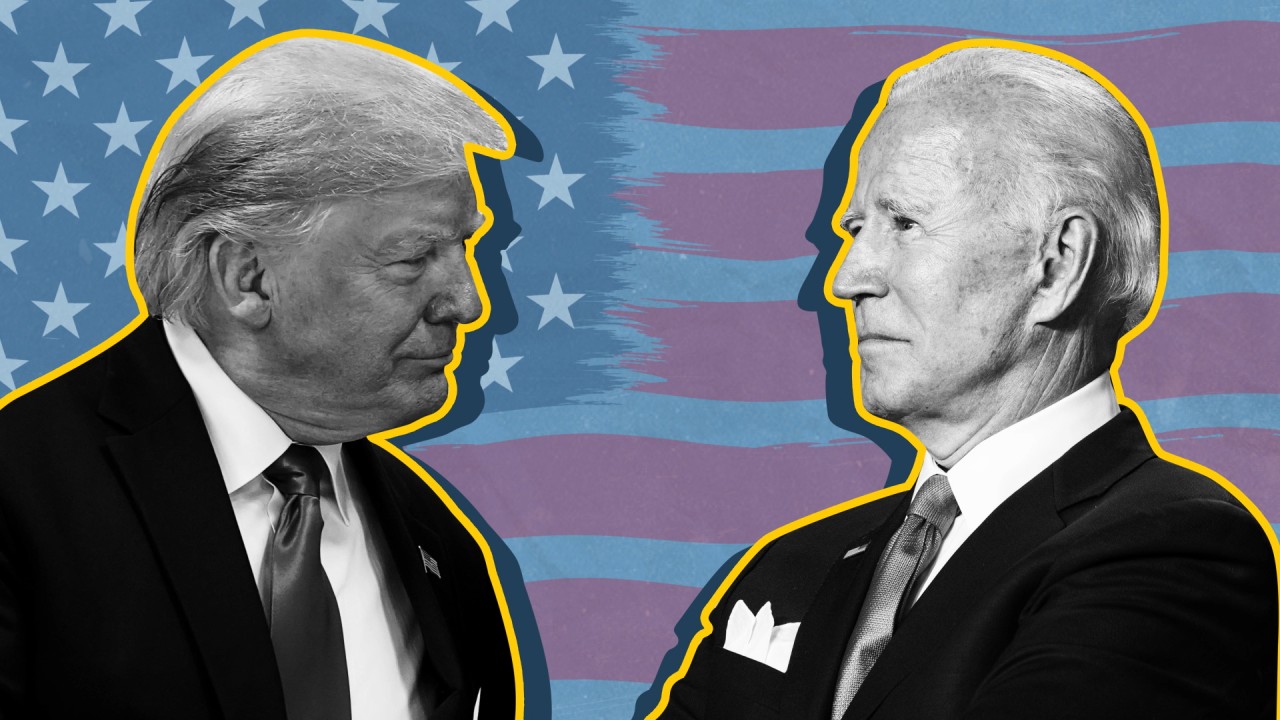
Explainer | US presidential election 2020: how the Electoral College picks the winner
- A candidate becomes US president by securing most ‘electoral’ votes rather than winning the popular vote
- Efforts to modify or abolish the Electoral College system, which originated in 1787, have not succeeded
“Beautiful” is how US political outsider Donald Trump described his shock presidential win against rival Hillary Clinton on the night of November 8, 2016. The details were less clean-cut.
Former secretary of State Clinton had received nearly three million more votes than her Republican rival.
But, by narrowly winning key battleground states, Trump surpassed the 270 Electoral College votes necessary to win the White House.
With the 2020 election on November 3 featuring Trump and Democrat Joe Biden, the rules of this enigmatic – some argue outmoded – system are coming back into focus.
US presidential election: the candidates, the issues, the polls … and China
Why an Electoral College?
The 538 members of the US Electoral College gather in their state’s respective capitals every four years after the presidential election to designate the winner. The popular vote in each state typically determines which candidate receives a state’s electoral votes.
A presidential candidate must obtain an absolute majority of the college vote – or 270 of the 538 – to win.
The system originated with the US Constitution in 1787, establishing the rules for indirect, single-round presidential elections.
The country’s Founding Fathers saw the system as a compromise between direct presidential elections with universal suffrage, and an election by members of Congress – an approach rejected as insufficiently democratic.
Since then, hundreds of amendments have been proposed to Congress in efforts to modify or abolish the Electoral College, but none has succeeded.
Debate was rekindled with Trump’s victory. If 2020’s race is a nail-biter, then the Electoral College will surely return to the spotlight.

Who are the 538?
Most are local elected officials or party leaders, but their names do not appear on ballots, and their identities are mostly unknown to voters.
Each state has as many electors as it has members in the House of Representatives (a number dependent on the state’s population) and in the Senate (two in every state, regardless of size).
California, for example, has 55 electors; Texas has 38; and sparsely populated Alaska, Delaware, Vermont and Wyoming have only three each.
The Constitution leaves it to states to decide how their electors’ votes should be cast. In every state but two (Nebraska and Maine), the candidate winning most popular votes theoretically wins all that state’s electors.
Trump vs Biden: the 8 states that will decide the 2020 US election
What are duelling electors?
States with close contests between Trump and Biden could produce competing slates of electors, one certified by the governor and the other by the legislature.
The risk of this happening is heightened in the battleground states of Michigan, North Carolina, Pennsylvania and Wisconsin, which have Democratic governors and Republican-controlled legislatures.
Some election law experts are concerned that an unprecedented volume of mailed-in votes and legal challenges will delay the outcome of the election for weeks, creating an extended period of uncertainty.
Trump has repeatedly said the election is rigged and made unfounded attacks on mail-in voting, which tends to favour Democrats.
If early returns show a Trump lead, experts say the president could press Republican-controlled legislatures to appoint electors favourable to him, claiming the initial vote count reflects the true outcome.
Governors in those same states could end up backing a separate slate of electors pledged to Biden if the final count showed the Democratic candidate had won.

11:15
Trump vs Biden: The 2020 US presidential election
Which set of electors would prevail?
Both chambers of Congress could accept the same slate of electors, which would almost certainly put the matter to rest.
The chambers could also split, which is more likely if the Republicans retain control of the Senate and Democrats hold onto their House majority.
If lawmakers cannot agree on a set of electors, the country will find itself in uncharted territory.
The Electoral Count Act, often described by academics as “unintelligible”, seems to favour the slate of electors certified by the state’s governor, according to Ned Foley, a professor at Ohio State University Moritz College of Law.
But Foley notes that some scholars and an analysis by the Congressional Research Service have rejected that conclusion.
Academics have sketched out several scenarios. Under one, Mike Pence as president of the Senate could throw out both sets of a state’s electors. Another contemplates that the House of Representatives would end up choosing between Biden and Trump. There is even a scenario in which the Speaker of the House, currently Democrat Nancy Pelosi, could become acting president.
Trump vs Biden: where they stand on key US election issues
Would the US Supreme Court get involved?
The Supreme Court may be called upon to interpret the Electoral College Act to break any deadlock.
A Supreme Court ruling helped resolve the 2000 election in favour of George W. Bush over Al Gore, but that case was about a recount in Florida and the decision was reached before electors met to cast their votes.
“I think there will be legal challenges,” said Jessica Levinson, director of Loyola Law School’s Public Service Institute. “But I could see a court saying this would really be better left up to Congress.”
Has this happened before?
In 1876, duelling electors in three states were deadlocked until a deal was brokered days before Inauguration Day.
The dispute was resolved after Republican Rutherford B. Hayes became president in exchange for withdrawing US troops left over from the Civil War from Southern states.
“I hope it’s a very low probability event but 1876 is a reminder that it is not zero and we have come very close to falling over that cliff in our history,” Foley said.
Electoral College schedule
Electors will gather in their states on December 14 and cast votes for president and vice-president.
Why this date? US law states they “meet and cast their vote on the first Monday after the second Wednesday in December”.
On January 6, 2021, Congress will certify the winner, who gets sworn in on January 20.
Agence France-Presse and Reuters
